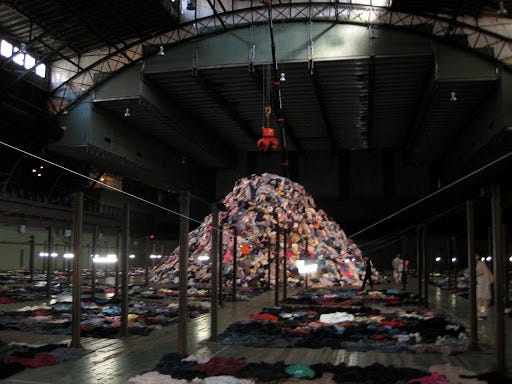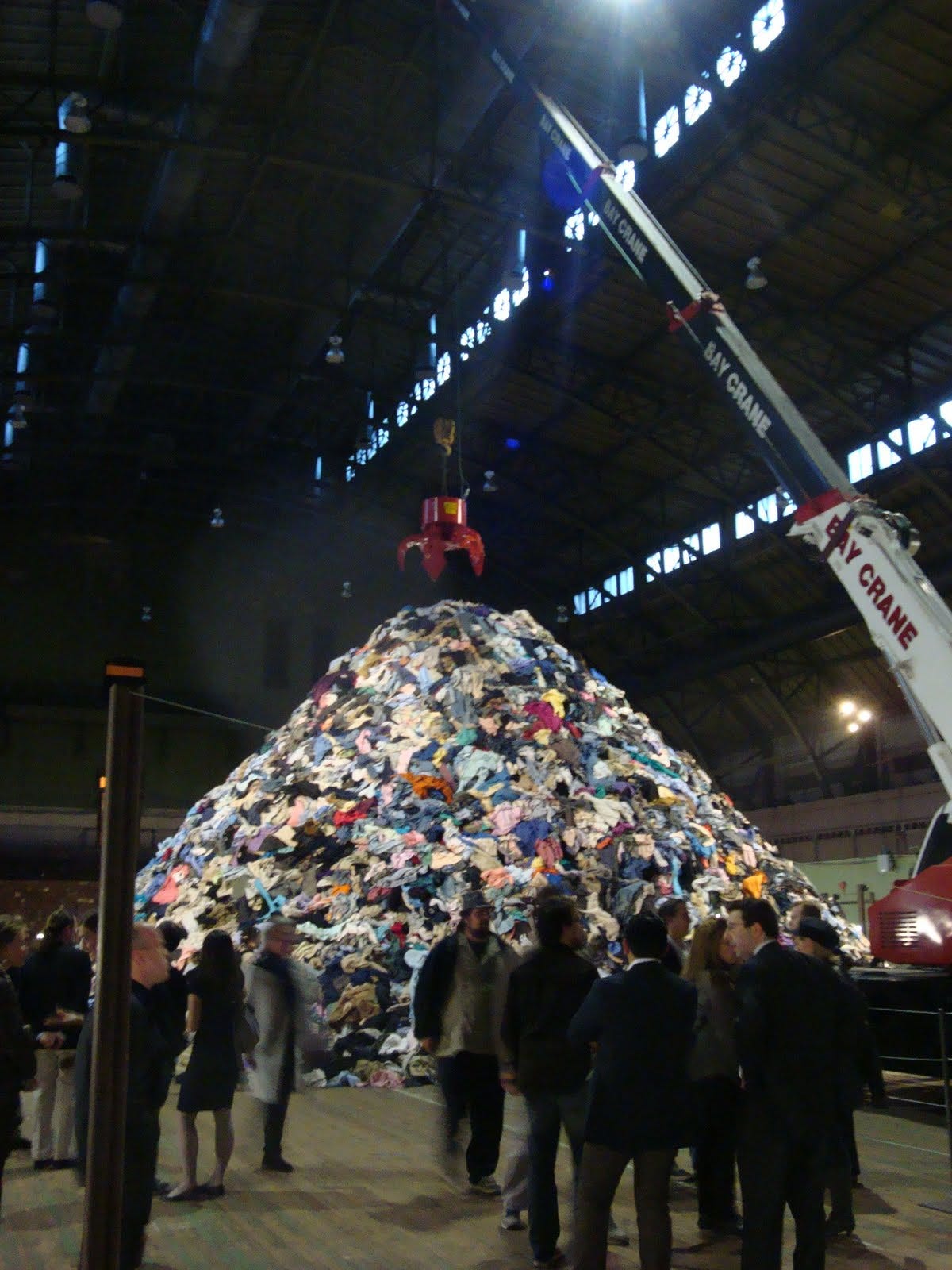The Art of Tragedy~ Christian Boltanski's "No Man's Land"
Analyzing the art installation in continuation of my series “The Art of Tragedy”
A wall of metal boxes at the entrance creates a divide from the outside, completely immersing you in the installation. As visitors walked in to witness this installation in person, they were met with a sixty-foot crane and its claw clasping onto a heap of clothing, then releasing its grip, causing the clothing to fall and scatter back onto a forty-foot mountain of clothing. (This goes on continuously.) At ground level, visitors saw gridded plots of primarily coats and speakers that echoed the sounds of human heartbeats. Furthermore, the heartbeats can only be heard at ground level; on the clothing mountain, there is still silence. This is “No Man’s Land,” an art installation by French artist Christian Boltanski.
“It’s used clothing. I’ve always imagined that used clothing and a photo of somebody and a dead body are nearly the same. They’re all objects related to the missing person. On the floor there are mostly coats, which more clearly take the form of people. On the “mountain” are other types of clothing that are all mixed up.”
I think there is a lot of depth and significance in this art installation. I find myself thinking about this piece a lot, due to its beautifully tragic themes.
So let’s plunge into this installation by first hearing some details of Christian Boltanski’s piece, as told to interviewers. Boltanski stated that the crane claw is meant to represent God or destiny. He intended for the gridded plots to depict refugee camps but noted they may be interpreted in a variety of ways. Boltanski didn’t want the audience to simply stand in front of the piece and observe it, but to be part of it. Therefore, within the gridded plots, there are small pathways visitors walk through, which Boltanski said made it appear as if they were looking for someone within those small squares of clothing.
The themes of this piece include individualism, innominateness, life, and death.
Upon reflecting on the crane claw representing God or destiny, it led me to think about those whose lives get taken every day. Are the lives taken unsystematically? Is there a possible determination for who lives and who dies? The crane standing taller than the mount of clothing represents total uncontrollability. We have no way of stopping death or determining who faces it. The cycle of picking up clothing and dropping it represents the cycle of life—living and dying. The sound of silence that fills the mountain is absence. The absence after one is taken.
The most important message I take in from this installation is the relationship between personal and impersonal. A single death can cause a significant impact on us, but a mass number of deaths often goes neglected. I believe it’s because a lot of individuals will connect deeper with a personal relationship versus an impersonal relationship where it is harder to connect with many. "The death of one man is a tragedy. The death of millions is a statistic." – Josef Stalin
(Note: This isn’t to dismiss any current world problems; I believe every individual should find sympathy for those suffering and in need of help. This is simply a conversation about the personal and impersonal and how individuals act on behalf. If you’d like to donate to Palestine: https://www.savethechildren.org/us/where-we-work/west-bank-gaza )
To expand on this thought, does one’s death ever remain personal? Perhaps to some degree. We remain personal with those close to us. However, after two or three generations, most individuals are forgotten, and their deaths become impersonal to the lineage that follows. Outside of our immediate circle, others will perceive our death as another life taken, another piece of clothing that sits on the mountain. When we pass and others see our lifeless bodies, they won’t know how we were as a person. When they see our empty clothing, they won’t know of our stories. When they see our loved ones grieving for us, they won’t know of the love we had for them. Because after death, individuality is lost.
The ground level of the installation is separated from the mountain of garments, not just literally but also metaphorically. The gridded plots of clothing represent those who live on. The use of coats captures the uniqueness and distinctiveness that remain. The heartbeats are playing as the sound of life. All the components that are lost upon death.
This was my interpretation and analysis of Christian Boltanski’s “No Man’s Land” presented in the year 2010. This installation no longer exists and was destroyed. “It is destroyed and not destroyed. Most art is only a relic. I wish mine to be more like a story, or knowledge. It’s not about the object, it’s the story.”- Christian Boltanski
What is your personal interpretation of Boltanski’s installation? What are your thoughts on the artist's commentary upon destroying his work? Let me know in the comments!
This was the last post pertaining to the “Art of Tragedy” series. Join me next time in my next post, and as always, thank you for reading!









